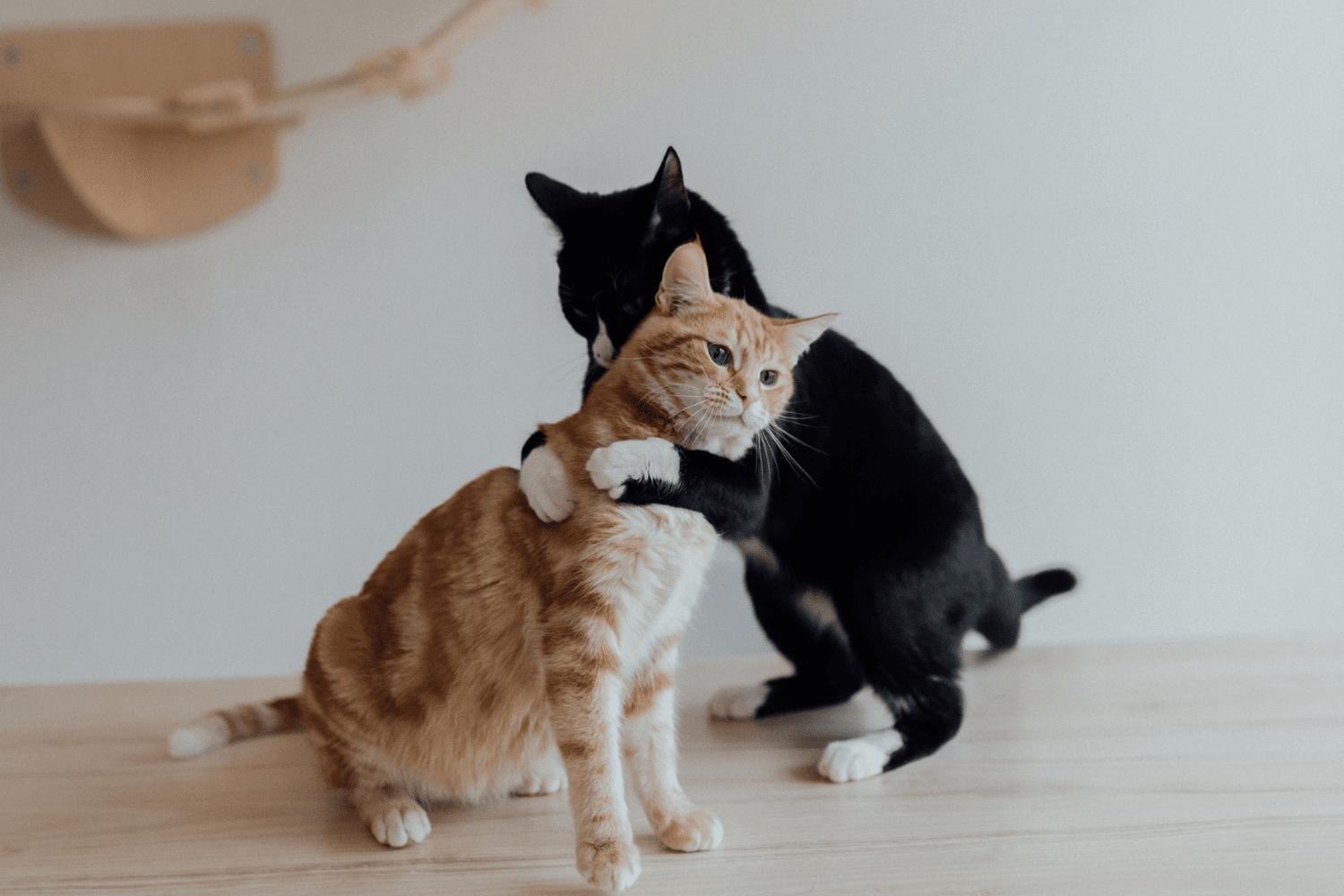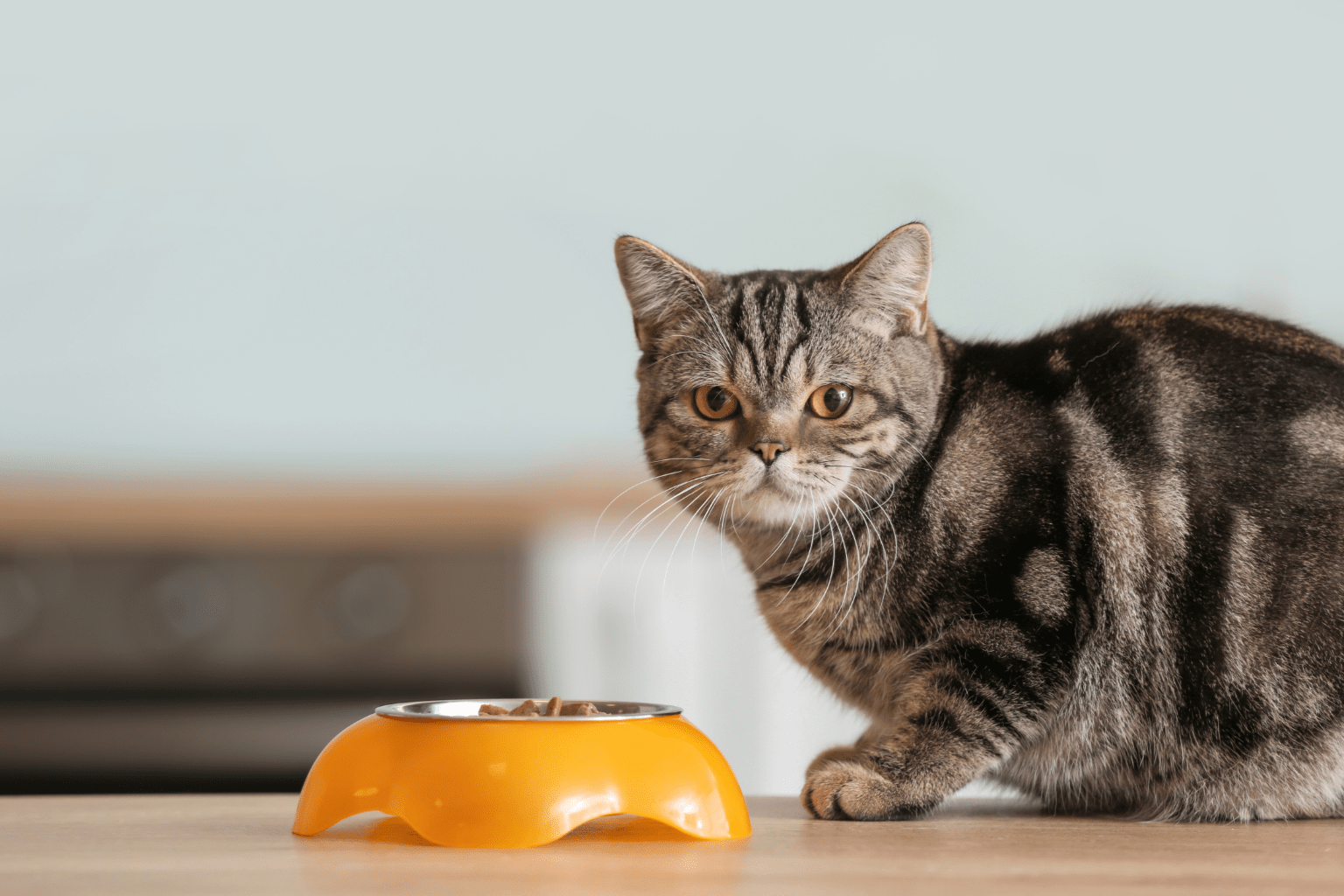Key Takeaways
- Bonded cats share strong emotional attachments that surpass normal cohabitation.
- They often eat together, sleep curled up, and show distress when separated.
- The bond between cats is crucial for their mental and physical health.
Table of Contents
- Understanding Bonded Cats: The Deep Connection
- Signs Your Cats Share a True Bond
- How Bonding Develops Over Time
- Wellness Advantages of Feline Partnerships
- Essential Care Strategies
- Why Adopting Bonded Pairs Benefits Everyone
- Common Myths About Bonded Cats
- Introducing a Third Cat to a Bonded Pair
- Bonded Cats vs. Cats That Simply Tolerate Each Other
- Supporting Bonded Cats' Wellness Naturally
- Natural Wellness Strategies for Bonded Pairs
- Long-Term Care Considerations
- Creating Optimal Environments for Bonded Success
- Conclusion: Embracing Feline Partnerships
Understanding Bonded Cats: The Deep Connection
When two cats share food bowls, sleep curled together, and visibly distress when separated, you're witnessing something special, a genuine feline bond. Bonded cats develop profound emotional attachments that go far beyond simple cohabitation, creating partnerships essential for their mental and physical well-being.
These connections form through various pathways: littermates who never separated, a mother-kitten relationship that endured, or even unrelated cats who discovered companionship through shared experiences. Unlike cats who merely tolerate each other's presence, truly bonded pairs cats rely on their partner for emotional security, stress regulation, and daily comfort.
For cats who experience anxiety or stress when separated, gentle support can make a world of difference. Products like Pet Relax Cat Calming Anxiety Relief offer natural support specifically designed for cats navigating emotional transitions.
Key Insight: Bonded cats often experience measurable health benefits, including lower stress hormones and improved immune function, making their partnership a literal lifeline for optimal wellness.
Signs Your Cats Share a True Bond

Physical Affection Displays
Synchronized sleeping ranks as the clearest bonding indicator. Cats only expose themselves vulnerably alongside those they trust completely, if your cats consistently choose to sleep touching or intertwined, they've formed a genuine connection. Face rubbing and scent marking behaviors reinforce this trust, as cats exchange familiar scents to create a shared identity.
Mutual grooming sessions, particularly around hard-to-reach areas like ears and necks, demonstrate active care-giving. Watch for cats who groom each other's faces, this intimate behavior occurs exclusively between bonded individuals and serves both hygiene and emotional bonding purposes.
Behavioral and Emotional Indicators
Genuine bonded pairs exhibit distress behaviors when separated, even briefly. One cat may vocalize excessively, pace, or refuse food when their partner visits the veterinarian. Conversely, their confidence visibly increases when reunited, often leading to immediate grooming or play sessions.
Resource sharing without competition provides another reliable indicator. While separate feeding stations remain recommended for hygiene, bonded cats naturally share space around food and water without territorial disputes or guarding behaviors.
How Bonding Develops Over Time
Kitten bonds form rapidly due to neuroplasticity and shared dependency experiences. Littermates or kittens introduced before 12 weeks typically establish connections within days, their flexible social development allowing quick attachment formation.
Adult cat pair bonding requires significantly more patience. Some cats connect within weeks through careful introduction protocols, while others need months of gradual exposure. Importantly, not all adult cats will bond, many achieve peaceful coexistence without developing the deep emotional attachment characteristic of true bonding.
Successful adult bonding depends heavily on personality compatibility, introduction methodology, and environmental stressors. Rushing this process often prevents bonding entirely, making gradual exposure and positive associations crucial for connection development.
Wellness Advantages of Feline Partnerships
Bonded cats experience measurable health improvements through their partnership. Mutual grooming maintains superior coat condition and reduces parasite loads, while shared play sessions provide essential exercise that prevents obesity and promotes cardiovascular health.
The emotional support aspect proves equally valuable. Bonded cats show reduced cortisol levels during stressful situations like veterinary visits or household changes. Their partnership provides natural anxiety management, often reducing the need for pharmaceutical interventions during challenging periods.
However, when stress does impact bonded cats, whether from separation anxiety, environmental changes, or health challenges, natural support becomes essential. At BestLife4Pets, we've developed gentle homeopathic remedies specifically formulated to support cats through emotional transitions while maintaining their natural bonding behaviors. Our pellets work with your cats' systems to promote calm confidence without disrupting their precious partnership.
If you're interested in learning more about how cats can serve as emotional support animals, check out can cats be service or emotional support animals for additional insights.
Essential Care Strategies

Creating Bond-Friendly Spaces
Successful bonded cat care requires balancing shared spaces with individual resources. Provide communal lounging areas like large cat beds or sunny windowsills where both cats can rest together comfortably. However, maintain separate feeding stations and multiple water sources to prevent resource guarding and ensure adequate nutrition monitoring.
The litter box rule intensifies with bonded pairs: provide one box per cat plus one extra, positioned in different areas. This prevents elimination issues while respecting each cat's individual preferences and territorial needs.
Relationship Maintenance
Even strongly bonded cats experience occasional disagreements. Minor hissing or brief swatting during play represents normal social negotiation. However, persistent aggression, resource guarding, or avoidance behaviors signal relationship stress requiring intervention.
Monitor eating habits closely, bonded cats often mirror each other's appetite changes. If one cat develops health issues, watch for sympathetic stress responses in their partner, including decreased appetite or increased vocalization.
For digestive concerns that may arise in anxious or stressed cats, Cat Laxative Constipation Relief can help support healthy digestion and reduce discomfort for both members of a bonded pair.
Why Adopting Bonded Pairs Benefits Everyone
Adopting bonded cats creates a win-win situation for families and shelters alike. These pairs typically require less human entertainment since they provide mutual companionship and play opportunities. Their established relationship also means fewer behavioral issues related to loneliness or boredom.
From a practical standpoint, bonded pairs often adapt more quickly to new homes. Their mutual support system reduces relocation stress, leading to faster settling periods and fewer adjustment-related problems like inappropriate elimination or destructive behaviors.
Shelter benefits prove equally significant. When adopters choose bonded pairs together, shelter space opens up for other cats in need. This creates a ripple effect of rescue that benefits the entire feline community while providing adopters with the unique joy of watching bonded cats navigate their new home together.
Common Myths About Bonded Cats
Myth: Bonded cats are harder to care for than single cats. Reality shows the opposite. Bonded pairs typically require less human intervention for entertainment and emotional support since they provide companionship for each other. They self-regulate play sessions, offer mutual grooming, and often display fewer attention-seeking behaviors.
Myth: Only siblings can form true bonds. Cats develop meaningful connections regardless of blood relation. Adult cats from different backgrounds frequently form deep bonds through shared experiences, compatible personalities, and gradual trust-building. Age differences don't prevent bonding either, senior cats often mentor younger companions.
Myth: Separation won't harm bonded cats if done gradually. Even well-intentioned gradual separation causes significant stress to bonded pairs cats. These cats have developed interdependent emotional systems where each relies on the other's presence for security and comfort. Breaking established bonds can trigger depression, anxiety, and behavioral regression.
For more on how cats respond to illness and infection, you might find can cats get a cold or respiratory infection helpful for understanding their health needs in pairs.
Introducing a Third Cat to a Bonded Pair

Successfully introducing a new cat to an existing bonded pair cats requires patience and strategic planning. The established pair will likely view the newcomer as an intruder initially, making gradual introduction essential for harmony.
Start with scent swapping before any visual contact. Rub a towel on the new cat and place it near the bonded pair's favorite spots. Feed all cats on opposite sides of a closed door, gradually moving food bowls closer to the barrier over several days. This creates positive associations with the newcomer's scent.
Visual introduction should happen through baby gates or screen doors, allowing cats to see each other without direct contact. Monitor body language closely, relaxed postures and curious sniffing indicate readiness for supervised face-to-face meetings. The entire process typically takes 2-4 weeks, though some situations require longer adjustment periods.
Pro Tip: Provide extra resources during introductions. Each cat needs individual food stations, water bowls, and litter boxes to prevent resource guarding and reduce territorial stress.
Bonded Cats vs. Cats That Simply Tolerate Each Other
Distinguishing between truly bonded cats and those who merely coexist helps owners understand their pets' social dynamics and care needs. Bonded cats actively seek each other's company, while tolerant cats maintain peaceful distance without emotional attachment.
Bonded cats demonstrate consistent affectionate behaviors: synchronized sleeping positions, mutual grooming sessions, and visible distress during separations. They often mirror each other's activities and show coordinated responses to environmental changes.
Cats in tolerant coexistence share space without conflict but lack emotional interdependence. They may sleep in the same room but not touching, eat near each other without resource sharing, and show minimal reaction to temporary separations. Both arrangements can work successfully, but understanding the difference helps owners provide appropriate care.
| Behavior | Bonded Cats | Tolerant Coexistence |
|---|---|---|
| Sleeping Arrangements | Cuddling, touching, synchronized positions | Same room but separate spaces |
| Grooming | Regular mutual grooming sessions | Individual grooming only |
| Response to Separation | Visible distress, searching behaviors | Minimal reaction or concern |
| Resource Sharing | Comfortable sharing despite preferences for individual bowls | Respectful distance during meals |
| Play Behavior | Interactive wrestling and chasing games | Parallel play without direct interaction |
Supporting Bonded Cats' Wellness Naturally
Maintaining the health and happiness of bonded pairs benefits from natural wellness approaches that support their unique social dynamic. Stress-related issues can affect both cats simultaneously, making preventive care especially important for bonded pairs.
When one bonded cat experiences health challenges, the companion often shows sympathy stress or behavioral changes. Natural remedies can support both cats during these periods, helping maintain their emotional equilibrium while addressing specific concerns.
BestLife4Pets offers gentle, effective solutions specifically formulated for cats' sensitive systems. Our natural remedies support emotional balance during stressful periods like vet visits or household changes, while addressing digestive concerns that commonly affect anxious cats. These pellet remedies integrate seamlessly into multi-cat households without disrupting established routines.
The beauty of natural wellness support lies in its gentle approach that won't interfere with the delicate balance bonded cats maintain. Unlike harsh interventions that might stress both cats, homeopathic remedies work with their bodies' natural healing processes, supporting overall wellbeing while preserving their precious bond.
For more tips on creating enriching environments for your cats, discover why do cats love boxes and how this simple addition can benefit bonded pairs.
Natural Wellness Strategies for Bonded Pairs

Maintaining optimal health for bonded cats requires understanding how their emotional connection influences physical wellbeing. When one cat experiences stress or illness, the companion often mirrors these concerns, creating a ripple effect that impacts both pets simultaneously.
Environmental stressors like moving homes, new family members, or schedule changes can trigger anxiety responses in both cats. Rather than treating symptoms individually, addressing the pair's shared stress response proves more effective for long-term wellness.
Natural remedies offer gentle support without disrupting the delicate balance between companions. BestLife4Pets formulations like Pet Relax Cat Calming Anxiety Relief help maintain emotional equilibrium during challenging periods, while Cat Hip and Joint Pain Relief supports aging cats who may develop concurrent health issues. These pellet-based remedies integrate seamlessly into feeding routines without causing additional stress.
Wellness Insight: Bonded cats often synchronize their eating, sleeping, and elimination patterns. Supporting one cat's health frequently benefits both, making natural wellness approaches particularly effective for pairs.
Long-Term Care Considerations
Planning for bonded pairs cats throughout their lifespan requires anticipating how aging affects their relationship dynamic. Senior bonded cats may develop mobility issues, cognitive changes, or chronic conditions that impact their ability to maintain previous interaction patterns.
Arthritis or joint stiffness can prevent cats from reaching favorite shared sleeping spots or engaging in mutual grooming. Providing multiple comfortable resting areas at various heights ensures continued companionship despite physical limitations. Heated beds or orthopedic cushions support aging joints while maintaining proximity.
Cognitive decline in one cat may confuse or distress the companion. The affected cat might forget established routines or show personality changes that alter the pair's dynamic. Maintaining consistent environments and gentle patience helps both cats navigate these transitions while preserving their emotional connection.
End-of-life planning becomes particularly complex with bonded cats. The surviving cat often experiences profound grief, requiring extra attention, possible appetite stimulation, and sometimes professional behavioral support. Preparing for these eventualities helps owners provide compassionate care during difficult transitions.
For aftercare tips following surgery or injury, you may find hip and joint surgery after care tips for dogs and cats useful for supporting your bonded pair through recovery.
Creating Optimal Environments for Bonded Success
Designing living spaces that support bonded pair cats involves balancing shared preferences with individual needs. Successful environments offer multiple options for every resource, preventing competition while encouraging natural bonding behaviors.
Vertical territory becomes crucial in smaller homes. Cat trees with multiple platforms allow bonded cats to maintain visual contact while respecting personal space preferences. Window perches positioned side-by-side satisfy their desire to observe together while providing individual comfort zones.
Feeding stations should offer both communal and separate options. While bonded cats may prefer eating near each other, individual bowls prevent resource guarding and accommodate different dietary requirements that may develop over time. Puzzle feeders and interactive toys encourage cooperative play while providing mental stimulation.
| Environmental Element | Bonded Pair Needs | Implementation Strategy |
|---|---|---|
| Sleeping Areas | Options for together and apart | Large beds plus individual spots |
| Litter Management | Multiple boxes to prevent conflicts | One per cat plus one extra |
| Play Zones | Interactive and parallel activities | Variety of toys and climbing structures |
| Feeding Areas | Proximity without competition | Separate bowls in same general area |
Conclusion: Embracing Feline Partnerships

Understanding and supporting bonded cats enriches both feline and human lives through the profound connections these pairs demonstrate. Their relationships teach us about loyalty, emotional support, and the healing power of companionship that transcends species boundaries.
Successful care for bonded pairs requires recognizing their unique social needs while providing individualized attention when necessary. Natural wellness approaches support these relationships by addressing stress, health concerns, and behavioral challenges without disrupting established bonds.
The decision to welcome bonded cats into your home represents a commitment to honoring their partnership while becoming part of their extended family. These remarkable relationships remind us that love, comfort, and healing often come in pairs, a lesson worth celebrating in our own lives.
If you want to explore more natural options for your cats' health, browse the full range of Natural Cat Supplements for Treating Common Health Issues in Cats and Kittens for holistic support.
Frequently Asked Questions
What are the key signs that indicate two cats share a true emotional bond?
True bonded cats often sleep curled up together, groom each other, and share food or territory without conflict. They show visible distress when separated and engage in synchronized behaviors like face rubbing and scent marking, which strengthen their emotional connection.
How does the bonding process differ between kittens and adult cats?
Kittens typically bond naturally through shared early experiences like littermate play and nursing, forming lifelong attachments. Adult cats can bond too, but it usually takes more time and gentle introductions, as they need to build trust and comfort gradually through positive shared experiences.
What are the mental and physical health benefits of having bonded cats?
Bonded cats often experience lower stress levels and improved immune function thanks to their emotional support for each other. Their companionship helps regulate anxiety and promotes overall mental well-being, which can contribute to longer, happier lives.
How can I support the well-being of bonded cats, especially during stressful situations like separation?
Supporting bonded cats means minimizing their time apart and providing natural calming aids designed for feline emotional health. Creating a consistent environment with familiar scents and routines helps ease stress, while gentle, natural supplements can support their body’s own healing during transitions.



